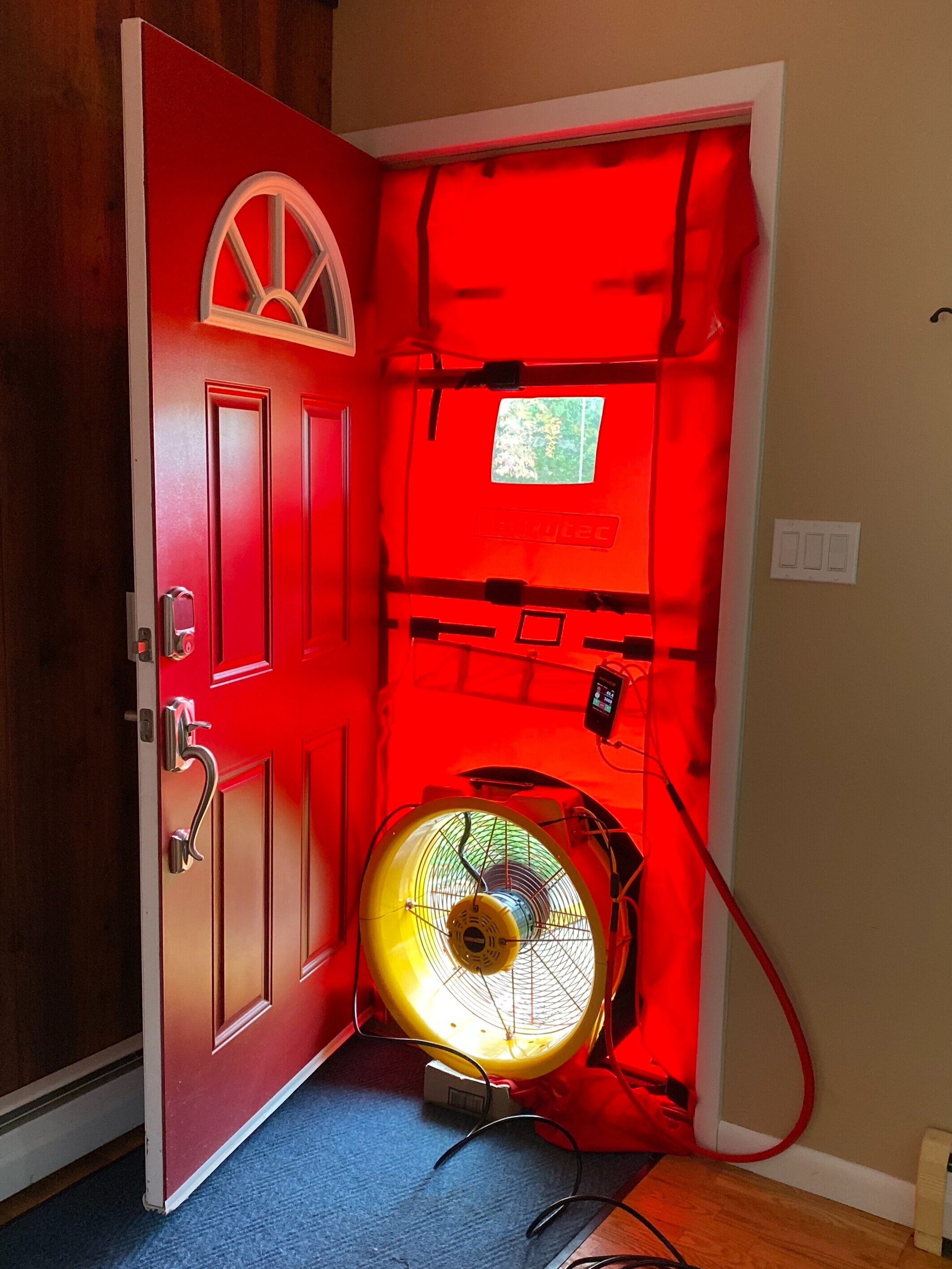What is a blower door test?
A blower door test is a procedure designed to discover how air-tight a structure is. Air can leak through walls, windows, doors, ceilings, basements, and even appliances. The blower door test results show exactly how much air is leaking. This report is done in CFM, cubic feet per minute, at a test pressure of 50 Pascals. To perform a blower door test, a blower door needs to be installed in one of the home's exterior doors. The blower door will consist of a frame, a calibrated fan, and a controller with a manometer.
The frame is usually made of metal, while a canvas or hard plastic shell is used to wrap around or be installed inside the frame. This provides an airtight barrier around the testing device. The calibrated fan will be installed in this frame as well. There is also a seal where the fan goes into this frame to ensure an excellent airtight connection. The controller is then plugged into the fan, and some tubing is run both outside and inside to get good pressure readings. Doing this will allow the controller to accurately calculate the CFM across the fan and give you the correct results.
Everything is installed, time to start up the fan. Not yet! There is still some prep work that needs to be done. The person administering the blower door test needs to perform a walkthrough of each room of the house. Every other exterior door needs to be closed and locked. All windows need to be closed and locked. Any appliances that use oil or gas need to be turned off or set to pilot. All chimney dampers need to be closed. Only then can the test start. There is no point in starting the test if a window is wide open, it will give vastly incorrect readings; no homeowner wants inaccurate readings for this kind of a test.
Now everything is ready, the technician turns on the fan and ramps it up; lets pause right here. What does this do? Sucking the air out of the home means that air from somewhere else will need to replace it. The amount of air removed will equal the amount of air that is coming in from penetrations around the home: window or door seals, ceiling penetrations, wall top plates, outlets, a multitude of areas.
Now, from here, the test can go one of two ways. The first way is pretty quick. A few minutes to pull the house down to the correct pressure and calculate the CFM that the blower door is exhausting. Afterward, a report is provided with ACH50 numbers as well as some other information, depending on the software that is being used to generate the report. This report should contain air changes per hour, cost of air leakage annually, and some recommendations on how to seal some air leaks.
The second way the test can go takes a bit more time but provides a great value to the homeowner. While the blower door is running, walking through the entire house to look, listen, and feel for air leaks. If the outside temperature is different from the usual inside temperature, a thermal camera can identify areas of infiltration. Without it, the back of your hand is sensitive enough to feel airflow coming from a ceiling light, an outlet, or even a window seal. Walking through the home while the test is happening allows you to see the severity of different leaks in the house. Sustainable InteriYours can explain what ACH50 is until we’re blue in the face, but putting your hand on an air leak that you didn’t know was there, or seeing the curtains move from the amount of air a compromised window seal can bring in, that can be better than any tableside lecture.
Now you know what a blower door test is, do you know why it is needed? If not, check out our article Why do I need a blower door test. Think that it’s all bogus and don’t know why you’d need to think about energy related testing at all? Think again, see what the benefit of this testing is. Then, let SIY help you see how airtight your home is. Not within our direct service area? No problem, use our Online Energy Audit. Feel free to drop an email to info@siy.biz or fill out the form in our Contact Us section and schedule a consultation. We will provide you with the information and guidance to tackle your project cost-effectively for both your wallet and your energy savings.

